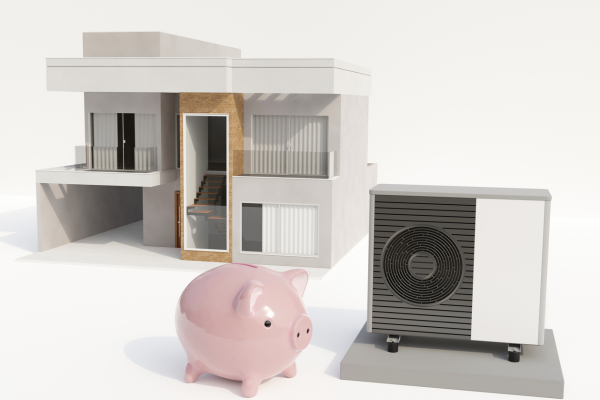Heat and cooling networks emerge as an ecological and economical heating and cooling solution. As a thermal network developer, Karno systematically studies the energy gain compared to a traditional solution. Because although the initial investment of a project is often higher than that of a traditional solution, such as an individual gas boiler or a heat pump, the comparison must be made over the longer term.
In the medium and long term, heat networks are competitive in many aspects. In this article, we explain why the heat network developed by Karno is a competitive solution for heat and cooling distribution.
An Amortized Initial Cost
The initial investment in a heat network is slightly higher at the outset than for a conventional installation. Nevertheless, this price difference is often offset by the economic advantages this solution offers.
A Profitable Real Estate Project for the Developer
From the feasibility study stage, Karno ensures to propose the most competitive heat network project possible. To do this, our experts offer a network sizing 100% adapted to consumer needs and technical constraints. Thus, the developer is sure to invest in a heat and cooling network that has the best possible energy efficiency.
Furthermore, a heat network system increases the value of the property. It is therefore an investment that is certainly larger initially, but proves to be more profitable.
Savings for the End Consumer
Thanks to optimal network maintenance and regulation, the consumer saves on their energy bills, at the level of heat and cooling production, distribution, and consumption. Indeed, Karno offers a thermal energy price that is fixed and cheaper for customers than a comparable individual solution.
Furthermore, Karno implements a fixed package for network maintenance and upgrades. The consumer therefore does not have to spend additional money for the operation or maintenance of their installation. If a breakdown occurs, the operator takes care of it, without repercussions on the client’s bill. In the medium term, the initial cost of the installation is therefore recouped.
Decarbonization of Heat
Thanks to centralized thermal energy production, heat networks offer the possibility of using renewable energy sources, such as geothermal energy, biomass, or waste heat. Indeed, heat networks are capable of using various renewable energy sources and combining them to produce 100% green thermal energy.
The end consumer of a thermal network thus contributes to the decarbonization of heat and becomes an actor in the energy transition. This active participation enhances their image.
Simplicity of Administrative Procedures
Karno operates in DBFMO (Design, Build, Finance, Maintain, Operate), meaning it offers a complete solution for the realization of a heat network project. Thus, Karno handles the feasibility study, the network design, its construction, its financing, its maintenance and its operation.
By taking charge of each step, Karno offers a turnkey solution for the realization of heat network projects and thus simplifies the administrative procedures for developers and clients.
No Client Maintenance or Implementation
Unlike an individual heating installation (boiler, heat pump, etc.), the management of heat networks is centralized. The network developer, like Karno, is also its operator. It handles heat supply, the proper functioning of infrastructure and its optimization.
This means that the consumer does not have to worry about network management or installation maintenance. The operator takes care of everything, whether for system maintenance or troubleshooting. The client does not have to find a solution themselves, as they would by calling a repairman for their boiler, for example. Thus, heat supply becomes as simple as electricity supply.
Karno, a Turnkey Solution for your Heat Network
In conclusion, although the energy transition has a cost, investment in heat networks proves worthwhile, both for developers and end consumers.
At Karno, we manage your heat network project from A to Z. Our process allows you to benefit from an efficient and competitive solution across all financial, ecological, technical, and administrative aspects.
